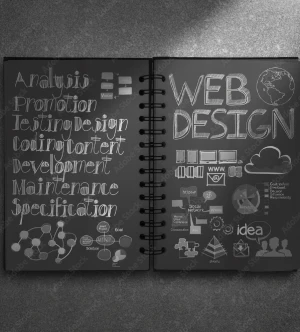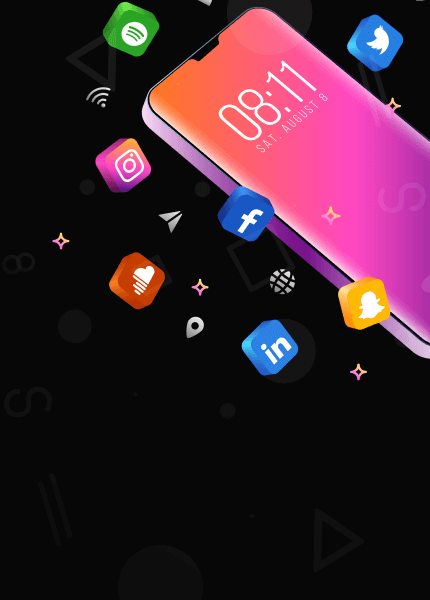With enterprise mobility estimated to be worth over $510 billion in 2022, many companies are taking advantage of this to meet their customers at the point of their needs. But it’s important to note that enterprise mobility has become a competitive scene, and one can only succeed when one knows how to create a mobile application successfully.
The process of app development for Android and iOS is a continuously ongoing one, which must be strategic and focus on your brand needs. Our guide will cover six significant steps to developing a mobile application.
Step 1: Decide the Objectives
You can’t just dive into developing mobile application or hiring a mobile application development service if you don’t know what you’re trying to achieve in the first place. Thus, the first step is to determine your objectives and base your app strategy on them.
The objectives you have depend on your business and the impact you are planning to make, but there are specific things one must do. These include identifying the target use, outlining the app’s goals, researching your competitors, and building a platform for the app.
The average Android and iOS app development cost is between $15,000 and $200,000, and it can take up to two months before you can launch it. To avoid wasting time and resources, it’s best to have a clear strategy.
Step 2: Prepare a Roadmap and MVP
Now that your idea has turned into a project, you can begin to analyze your business needs and plan the requirements of your app. Do so by preparing a product roadmap, including the critical milestones in the mobile application development.
It's also essential to identify those you need to hire for your mobile application development project. For instance, you will need UI/UX designers for the next step. Also, there are different programming languages and technology stacks to consider, so your team will include Android and iOS app developers.
Your team will also require designers, testers, project managers, and specific experts. This is why hiring a mobile application development service is usually recommended rather than hiring all these people individually.
This step also involves researching the name of your mobile application and getting a unique name. If you're working for a short period, it's best to define your MVP and focus on this first.
Step 3: UI/UX Design
The next step in app development for Android and iOS is the user interface and user-experience design. The only reason why people like apps is because they are convenient, and so your UI/UX design must be interactive, user-friendly, and intuitive. It should encourage your users to keep using.
When setting up your UI/UX design, you need to set up information architecture, wireframes, a style guide, and mockups. Then, you will need a complete prototype for your app, as this makes early-stage testing easier.
You can easily hire professionals for your team to cover necessary steps like wireframes, mockups, and prototypes. However, getting a mobile application development service means you don't have to worry about this. Once you have your app's design and functionality, you can move on to the next stage.
Step 4: Develop the App
Now you can finally start developing your mobile application. There's a good chance that you need to hire an Android and iOS app developer to get this done. A mobile app consists of the backend and the front-end, all of which the developer does.
The backend includes the server-side and database, and it supports the functions of your mobile app. Then, the API connects the backend to the front-end, which is the part of the mobile app that your end-user sees and interacts with.
There are different web programming languages and databases to consider for backend and front-end, and you need to consider one that is best for your app. Thus, it would be best to keep this in mind when hiring a developer. Despite this, the framework should be flexible and easy to update.
It's also a good idea to use the agile development approach, especially if you want to launch the app quickly.
Step 5: Testing
Once the app company has taken care of the development, you need to test your app before launching it. Depending on who you hire, the company can take care of that. It's essential to carry out quality assurance testing on the mobile app to ensure everything is working smoothly before pushing it to your customers.
You can do different types of testing, including user experience, function, performance, security, device, and platform.
Step 6: Deployment
Once your native mobile app is tested and trusted, you can deploy it into the app stores. You need to create a developer account and then launch the app to do this. It's essential to include an attractive description and screenshots of your app, as users check this before downloading the app.
Don't just launch your app and forget about it. Constant maintenance and support are also essential, as you might need to fix bugs, update the app, and add several features. It's a good idea to depend on a professional service, as this is very time-consuming.
Should You Hire a Professional?
The entire process of developing an app takes a lot of resources, but one thing it needs is a wide variety of skills. If your company is not tech-focused or doesn't have the people you need, it's better to hire an Android and iOS app development company rather than scouting for everyone you need out there.
You have all the designers, developers, experts, and managers you need to get your app done with a company. You will have to provide the idea, collaborate, and offer approval. It is more cost-effective to get a professional.
Conclusion
Even after you launch your app, app development continues, as you will build more functionality and work on user feedback. It's important to tick all the necessary boxes if you want to launch a successful app and take your business to another level.














